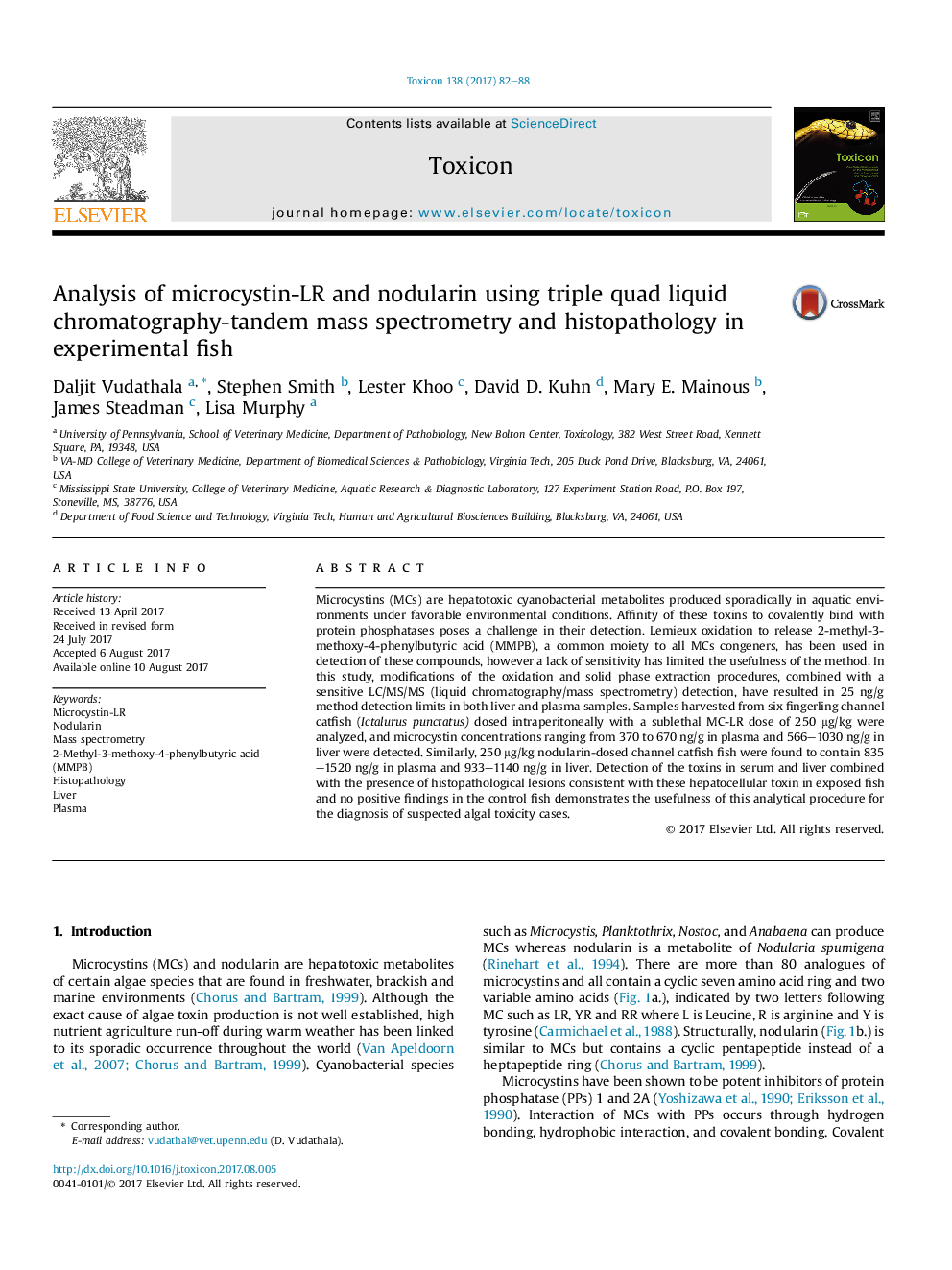| Article ID | Journal | Published Year | Pages | File Type |
|---|---|---|---|---|
| 5519208 | Toxicon | 2017 | 7 Pages |
â¢Histopathological lesions and residues of MC-LR and Nodularin in plasma and liver.â¢Hepatocellular necrosis with karyomegaly and peripheralized chromatin.â¢Lemieux oxidation generated MMPB from samples for analysis with LC/MS/MS.â¢Method detection limit was established at 25 ng/g in liver and plasma.
Microcystins (MCs) are hepatotoxic cyanobacterial metabolites produced sporadically in aquatic environments under favorable environmental conditions. Affinity of these toxins to covalently bind with protein phosphatases poses a challenge in their detection. Lemieux oxidation to release 2-methyl-3-methoxy-4-phenylbutyric acid (MMPB), a common moiety to all MCs congeners, has been used in detection of these compounds, however a lack of sensitivity has limited the usefulness of the method. In this study, modifications of the oxidation and solid phase extraction procedures, combined with a sensitive LC/MS/MS (liquid chromatography/mass spectrometry) detection, have resulted in 25 ng/g method detection limits in both liver and plasma samples. Samples harvested from six fingerling channel catfish (Ictalurus punctatus) dosed intraperitoneally with a sublethal MC-LR dose of 250 μg/kg were analyzed, and microcystin concentrations ranging from 370 to 670 ng/g in plasma and 566-1030 ng/g in liver were detected. Similarly, 250 μg/kg nodularin-dosed channel catfish fish were found to contain 835-1520 ng/g in plasma and 933-1140 ng/g in liver. Detection of the toxins in serum and liver combined with the presence of histopathological lesions consistent with these hepatocellular toxin in exposed fish and no positive findings in the control fish demonstrates the usefulness of this analytical procedure for the diagnosis of suspected algal toxicity cases.
